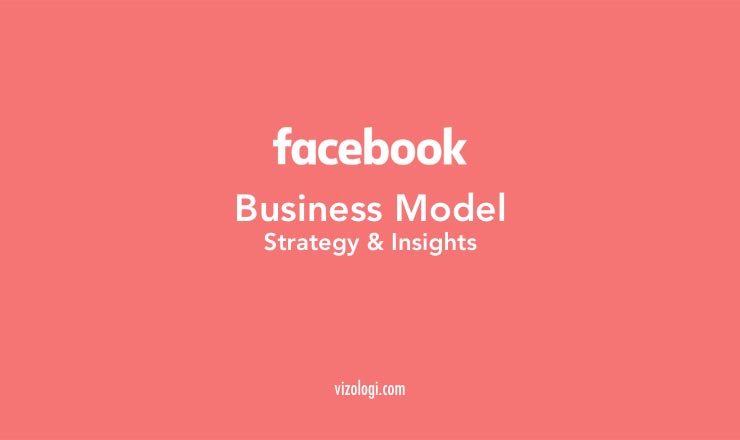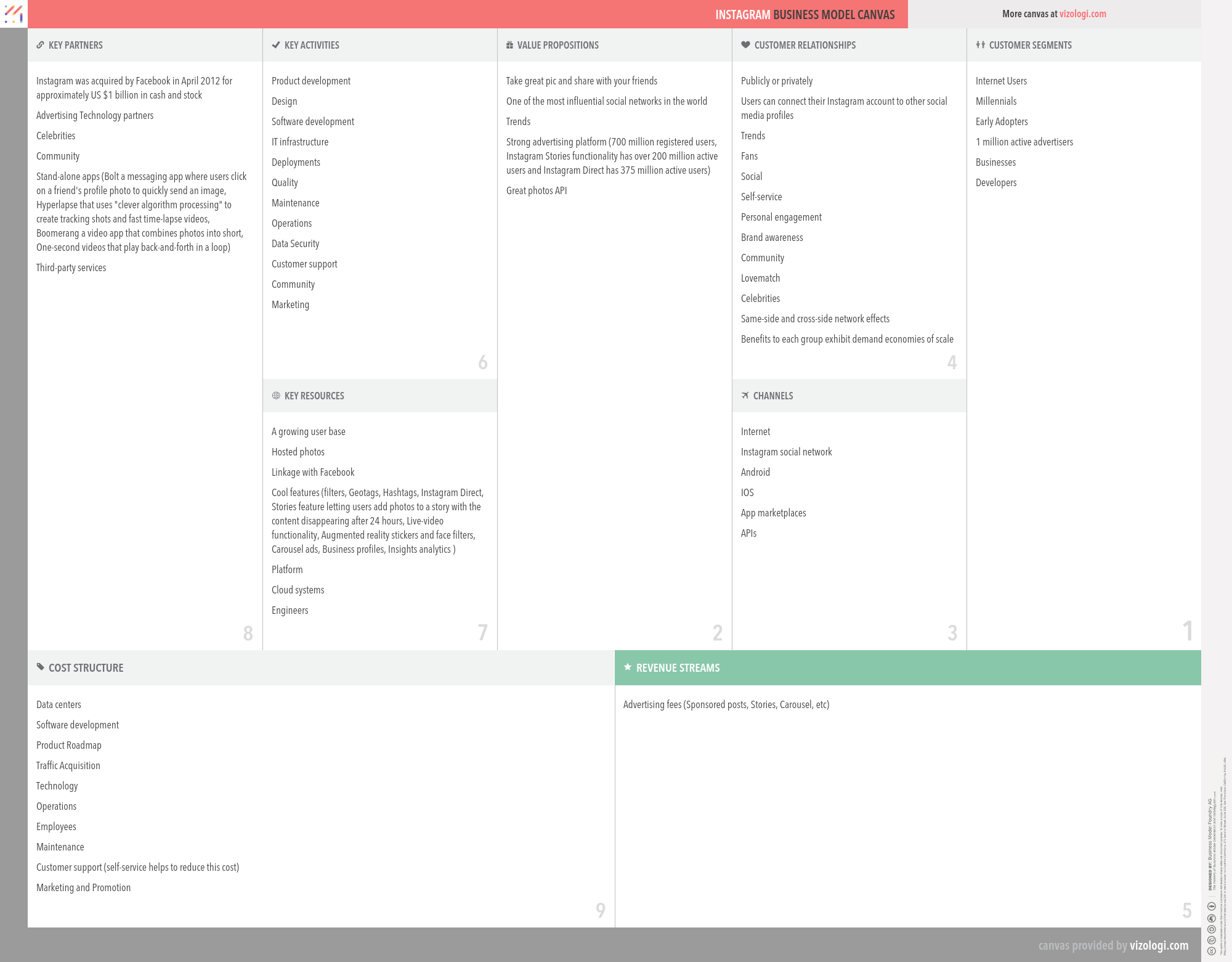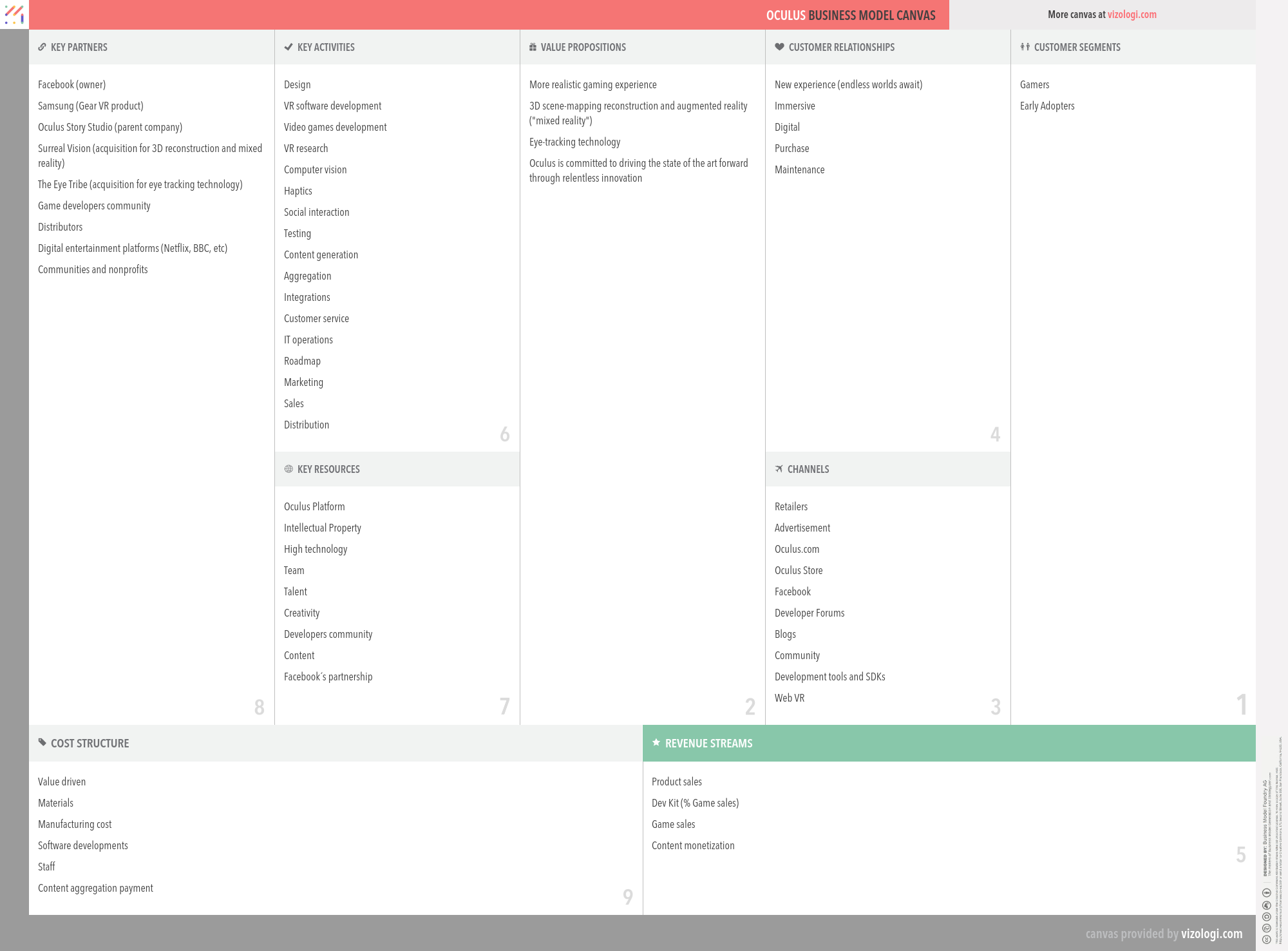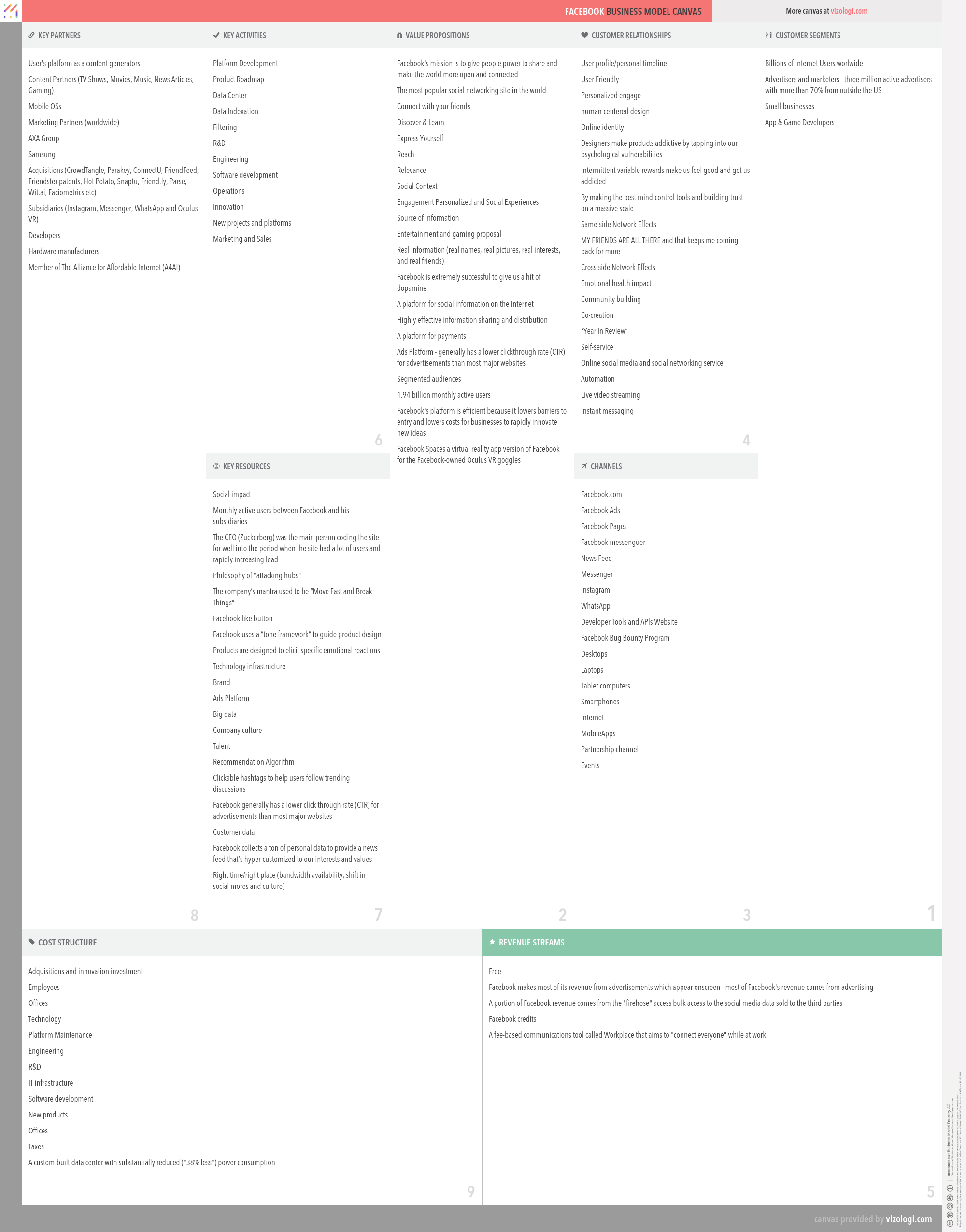FACEBOOK BUSINESS MODEL | HOW DOES FACEBOOK MAKE MONEY | STRATEGY AND INSIGHTS

There are different varieties of social networking websites like MySpace, Facebook, Twitter, Instagram, QZone etc. But what is the most loved social networking website? Everyone would shout out Facebook. This is clearly evident from the 2.07 billion active monthly users and 27.64 billion USD as of 2016. Facebook, written in C++, PHP and D language, was set in motion on February 4, 2004, by Mark Zuckerberg along with Andrew McCollum, Chris Hughes, Eduardo Saverin and Dustin Moskovitz. Facebook can be operated on laptops, tablet computers, desktops and smartphones.
In the initial stages, Facebook was exclusive for Harvard students only. This is one of the main reasons for the swift growth and popularity of Facebook. Instead of spreading itself all over the globe at the same time, it took the world by storm bit by bit. From Harvard students only, it later grew to accommodate other colleges in the Boston area and later on to the Ivy League schools. In 2005, a high school version was launched in September and later it was extended towards other colleges of UK and then Australia and New Zealand in October and December respectively. It overtook MySpace as the most popular social networking website in 2006 when it allowed anyone under the age of 13 to access it.
What can you do on the Facebook website?
People use Facebook for both fun as well as for business. Facebook lets you connect with people all around the world with just your name and email. It also connects you to other people around the globe by using a simple algorithm where it detects the similar connections between two people and suggests them to be friends. This algorithm provides information based on your Facebook activity. This is useful especially in promoting businesses. By asking permission and accessing your contacts, Facebook allows you to send them requests. Using the Friend Finder option is another way of searching for your friends. By just typing the name, the list of people having similar names come up with the names of people having common friends with you coming on top.
Whatever details you enter in your profile comes up in your ‘Timeline’, which was introduced in September 2006. Depending on what you input, your personal information, photos you upload, the list of friends, pages and people you ‘like’ as well as the posts you put up or share are shown in the timeline. If a friend ‘tag’ your name in any picture or post, that too come in your timeline. The privacy settings let you decide who all can view your profile or see the posts you upload or share. Other options in settings include the way you can receive notifications, language, who all can tag you etc.
The list of games and applications found on Facebook is numerous. Zygna is the most successful game developing company which flourished through Facebook. Their most popular game, Farmville, was launched on in June 2009, reaching 10 million daily active users within six weeks. Other than games and applications, Facebook gives birthday notifications as well.
Facebook can also be used for businesses, especially small-scale ones. Facebook launched Facebook Pages for businesses and celebrities for promotions and also to have a connection to the general crowd. It engages people in your marketplace and gives your business a hold there. Events can be organized and special offers can be publicized through the pages. Having an official Facebook page is now a basic essential factor for any business to flourish.
The companies owned by Facebook, Inc. which contribute to the Business Model
With 65 company acquisitions by Facebook, the revenue generation is massive. The major acquisitions, as well as the major revenue generators of Facebook, Inc. other than Facebook.com, are:
Facebook Payments Inc.
Facebook became really committed to deepening its revenue streams beyond advertising that it formed a subsidiary, Facebook Payments Inc. in December 2010. Starting Facebook Payments was a way of showing the world that Facebook is getting involved in the payment marketplace and through it, is vying to make its business operations smoother.
Instagram, created by Kevin Systrom and Mike Krieger, was launched in October 2010 for iOS devices and in April 2012 for Android devices. This photo-sharing app was acquired by Facebook in April 2012 for around US$1 billion in cash and stock. Instagram, having around 800 million monthly active users, let users upload photos, videos, apply various filters to the photos and videos and tag locations using geotags. By adding hashtags, the users can link their photos or videos with other photos or videos featuring the same hashtag.
Instagram business model canvas explained:

Whatsapp, Inc.
Whatsapp Messenger, popularly known as Whatsapp, was released in January 2009. It is a cross-platform instant messaging and Voice-over-Internet Protocol (VoIP) service which was acquired by Facebook in February 2014 for around US$19.3 billion. It has over 1.3 billion monthly users and is thus the most favourite messaging application of all times. It offers end-to-end encryption for the data transfer between two users including photos, videos, audio files, documents, and user location.
Atlas
Atlas, founded in 2001, offers advertisers help in navigating the digital world. Atlas developed the multi-touch attribution which has helped agencies and advertisers optimize their campaigns. It was acquired by Facebook in 2013.
Onavo
Onavo, founded in 2010 by Roi Tiger and Guy Rosen, is a mobile analytics company which developed Onavo Insights and Onavo Mobility apps. While the app offers data usage and compression of data information, Onavo Insights offers app usage data and data regarding the consumer trends in social networking, entertainment, finance and online gaming. It was acquired by Facebook in October 2013.
Oculus
Oculus VR, founded in July 2012 by Palmer Luckey, Nate Mitchell, Brendan Iribe and Michael Antonov, is a technology company that particularizes in virtual reality software and hardware. Facebook acquired Oculus VR in March 2014 for US$2.3 billion in cash and stock. Oculus VR also acquired Surreal Vision, in 2015, an England-based startup which pivots on mixed reality and 3D reconstruction.
Oculus business model canvas explained:

Moves
Moves, a Finland-based fitness tracking app, was acquired by Facebook in April 2014. This app, available in both Android and iOS smartphones, records and keep note of any activity you do such as walking, running, cycling etc. This app lets you keep track of the duration, distance, steps and calories burned during the exercises.
Masquerade
Masquerade or MSQRD, a face swapping app, was acquired by Facebook in March 2016. This app lets you create live, animated filters for your selfies which made it possible for Facebook to compete with Snapchat’s filters. MSQRD has the feature of live personal video which is a stronghold for Facebook.
Exploring the Business Model Canvas of Facebook
Before getting into the detailed structure of the business model of Facebook and analyzing the important segments, let us look into the sources through which Facebook, Inc. earns revenue.
How does Facebook, Inc. earn revenue?
Advertisements
Facebook’s most important revenue source is advertising. User-targeted advertisements are one of the major revenue generators. There are a lot of markets in which the products are user-targeted. Instead of wasting resources by reaching out to everyone in the target group personally, marketers approach Facebook which has collected the data of users and sells it to the markets in a restricted manner. These marketers then put up the ads in front of users they feel the product would appeal to. Cookies and caches of the web browser are also used to determine the type of ad to be posted.
Large-scale advertising occurs through Engagement advertisements, where big brands pay Facebook to put up their ads on the homepage itself. Engagement ads bring around half of the revenue generated by the user-targeted ads.
Payment for Games and other third-party applications
You must have played different games like Farmville, Chess etc in Facebook or used applications like ‘Detect your love percentage’ etc. Facebook generates revenue by allowing these apps or games on the user’s page. Depending on the number of users playing a specific game, Facebook, as well as the developers of the games or apps, receive revenue. All the in-built purchases are through Facebook Payment, which takes a share of the payment made to the third-party.
Oculus
Facebook also generate revenue by selling the Virtual Reality headsets and other products of Oculus VR.
Workplace
Workplace is a private social media networking service for employees of a company. Discussions within the office can be done through Workplace. Revenue is generated based on the number of employees using the service from the company.
Business Model Canvas of Facebook
Business model canvas of Facebook explains the different aspects of a business model like customer segments, value propositions, channels, customer relations, revenue stream, key activities, key resources, key partners and cost structure. Click to enlarge the image.
Customer Segments: This denotes the people for whom Facebook is useful.
- The 2.07 billion active monthly users
- Advertisers and Marketers who use Facebook as one of the media to earn revenue by placing ads and promotional offers.
- Small business owners who can promote their business through Facebook Pages.
- App & Game Developers like Zynga who uses Facebook as a platform to showcase their products and earn revenue from the in-game purchases.
Value Propositions: What all problems can Facebook solve and what all do they have to offer.
- Facebook is on a mission to provide free internet connectivity to everyone on the planet irrespective of the country.
- Facebook is the most popular social networking site in the world with over 2.07 billion active monthly users.
- You can connect with your friends irrespective of the distance.
- You can discover and learn about new people and things.
- Facebook is a platform to express yourself and your talents.
- It can be used to reach people with common goals.
- Based on your search preference, desired content will be shown on your page.
- More than learning about new things, Facebook gives you tons of games and other entertainment.
- It is a platform to share social issues so that more people get to know about it.
- It is also a platform for secure payments.
- It has a lower clickthrough rate (CRT) for advertisements than most major websites.
- The users are segmented based on their age, place of origin, place of residence etc.
- Facebook’s platform is efficient because it lowers barriers to entry and lower costs for businesses to rapidly innovate new ideas.
- Facebook Spaces is a virtual reality app version of Facebook for the Facebook-owned Oculus VR goggles.
Channels: What all are the platforms used by Facebook to reach the customers/users.
- Facebook.com is used by people to connect with others among other things.
- Facebook Ads let advertisers and marketers advertise their product.
- Facebook Pages are used by small businesses and celebrities for promotion.
- Facebook Messenger is a message-only app where you can chat and call your Facebook friends.
- Instagram is a photo-sharing app owned by Facebook.
- Whatsapp is a messaging and VoIP app owned by Facebook.
- Developer Tools like Access Token Tool and Graph API Explorer are used by developers.
- Facebook Bug Bounty Program rewards people if they find any bugs in any Facebook application.
- Facebook can be accessed using internet and mobile data from desktops, laptops, tablet computers and smartphones.
- Events can be organized and invitations can be sent to everyone.
- Partnership channels.
Customer Relationships: Features offered by Facebook to connect with the customers.
- The personal timeline where users can post photos and other personal information.
- The layout and designs are user-friendly and human-centred.
- Having a Facebook profile is like having an online identity.
- Designers make the products addictive by tapping into our psychological vulnerabilities.
- Intermittent variable rewards make us feel good and get us addicted to Facebook.
- Facebook uses the best mind-control tools and builds trust on a massive scale.
- People having similarities between them and not having similarities between them come together to form same-side network effects and cross-side effects respectively.
- Having your friends on Facebook makes you come back for more.
- Emotional health impact and community building.
- The entire happening of the year comes as “Year in Review”.
- Instant messaging and live video streaming are available on Facebook.
Revenue Stream: What are the main income sources? Where does all the users have to pay?
- Facebook can be used for free.
- Most of the revenue comes from advertising on Facebook.
- Workplace tool that connects people from work.
- Selling Virtual Reality headsets from Oculus VR.
Key Activities: What are the activities undertaken by Facebook.
- Platform Development
- Product Roadmap
- Data Center
- Data Indexation
- Filtering
- R&D
- Engineering
- Software Development
- Operations
- Innovation
- New projects and platforms
- Marketing and Sales
Key Resources: What all resources do Facebook need to be successful?
- Facebook requires as much social impact as possible.
- The monthly active users of Facebook and its subsidiaries should increase.
- The CEO himself is a key resource as he was the main person coding the site for well into the period when the site had a lot of users and rapidly increasing the load.
- Philosophy of “Attacking hubs”.
- The company’s mantra used to be “Move Fast and Break Things”.
- The ‘like’ button on Facebook.
- Facebook uses a “Tone Framework” to guide project design.
- Products are designed to elicit specific emotional reactions.
- Technology infrastructure.
- Brand.
- Ads platforms.
- Big data.
- Company culture.
- Talent.
- Recommendation Algorithm.
- Clickable Hashtags to help users follow trending discussions.
- Facebook has a lower clickthrough rate (CRT) for advertisements than most major websites.
- Customer data.
- Facebook collects a lot of personal data to provide a news feed that is hyper-customized to our interests and values.
- Bandwidth availability, shift in social mores and culture at the right time and place.
Key Partners: Who all help Facebook? What all do they do?
- User’s platform as content generators.
- Content Partners like TV Shows, Movies, Music, News Articles and Gaming.
- Mobile Oss.
- Worldwide marketing partners.
- AXA Group.
- Samsung.
- Acquisitions like CrowdTangle, Parakey, ConnectU, FriendFeed, Friendster patents, Hot Potato, Snaptu, Friend.ly, Parse, Wit.ai, Faciometrics etc.
- Subsidiaries like Instagram, Whatsapp, Messenger and Oculus VR.
- Developers.
- Hardware manufacturers.
- Member of The Alliance for Affordable Internet (A4AI).
Cost Structures: What are the types and relative proportions of fixed and variable costs that Facebook incurs?
- Acquisitions and innovation investment.
- Employees.
- Offices.
- Technology.
- Platform Maintenance.
- Engineering.
- R&D
- IT infrastructure.
- Software development.
- New products.
- Offices.
- Taxes.
- A custom-built data centre with substantially reduced power consumption.
The Future of Facebook
Facebook is planning to bring their dream of augmented reality to the streets. They believe that the camera in smartphones is on the margin of taking augmented reality mainstream, improving the way how people interact with each other and with the world and how they utilise Facebook through both of those. The camera application in phones is going to be swarmed with thousands of filters which could be said as a seismic shift for Facebook, as it has largely relied on text and photos for original content till now.
Facebook has been making plans to make the business model more effective. This especially means an increase in revenue through their various strategies. Since there are links between all the subsidiaries of Facebook, the effectiveness of the Facebook Business Model would increase the effectiveness of Whatsapp and Instagram Business Models as well.

Vizologi is a revolutionary AI-generated business strategy tool that offers its users access to advanced features to create and refine start-up ideas quickly.
It generates limitless business ideas, gains insights on markets and competitors, and automates business plan creation.



